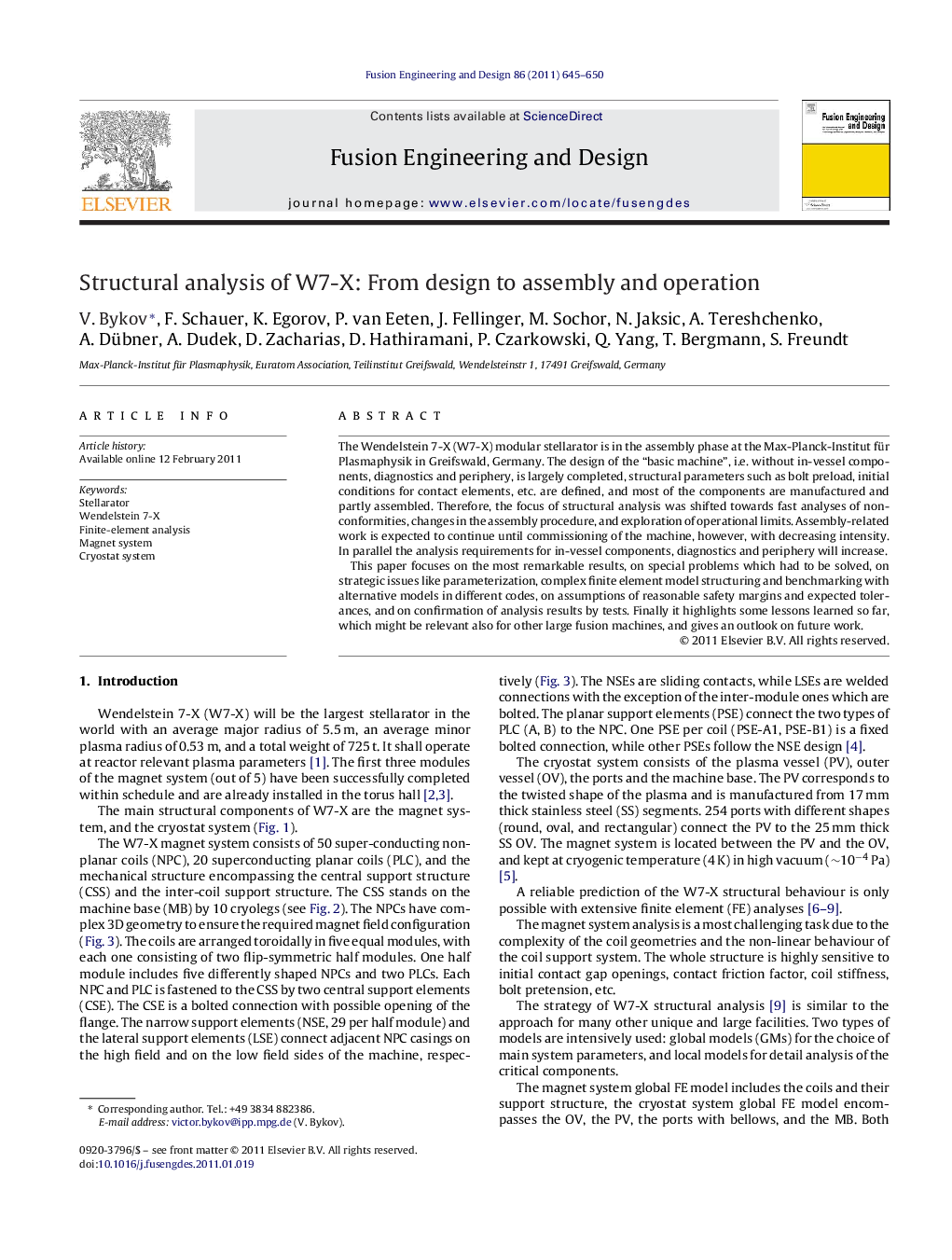| Article ID | Journal | Published Year | Pages | File Type |
|---|---|---|---|---|
| 272509 | Fusion Engineering and Design | 2011 | 6 Pages |
The Wendelstein 7-X (W7-X) modular stellarator is in the assembly phase at the Max-Planck-Institut für Plasmaphysik in Greifswald, Germany. The design of the “basic machine”, i.e. without in-vessel components, diagnostics and periphery, is largely completed, structural parameters such as bolt preload, initial conditions for contact elements, etc. are defined, and most of the components are manufactured and partly assembled. Therefore, the focus of structural analysis was shifted towards fast analyses of non-conformities, changes in the assembly procedure, and exploration of operational limits. Assembly-related work is expected to continue until commissioning of the machine, however, with decreasing intensity. In parallel the analysis requirements for in-vessel components, diagnostics and periphery will increase.This paper focuses on the most remarkable results, on special problems which had to be solved, on strategic issues like parameterization, complex finite element model structuring and benchmarking with alternative models in different codes, on assumptions of reasonable safety margins and expected tolerances, and on confirmation of analysis results by tests. Finally it highlights some lessons learned so far, which might be relevant also for other large fusion machines, and gives an outlook on future work.
